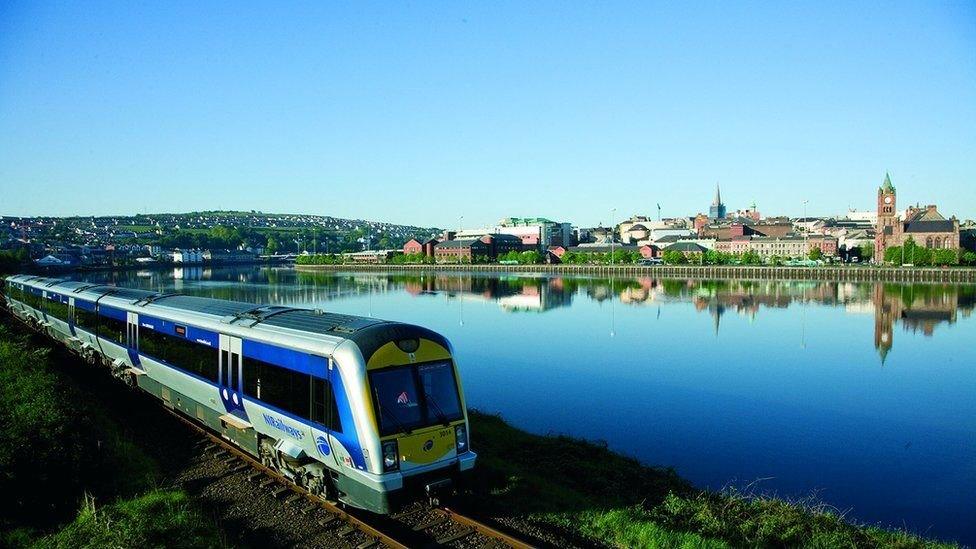Why has Ireland's cross-border railway plan gone off track?
- Published
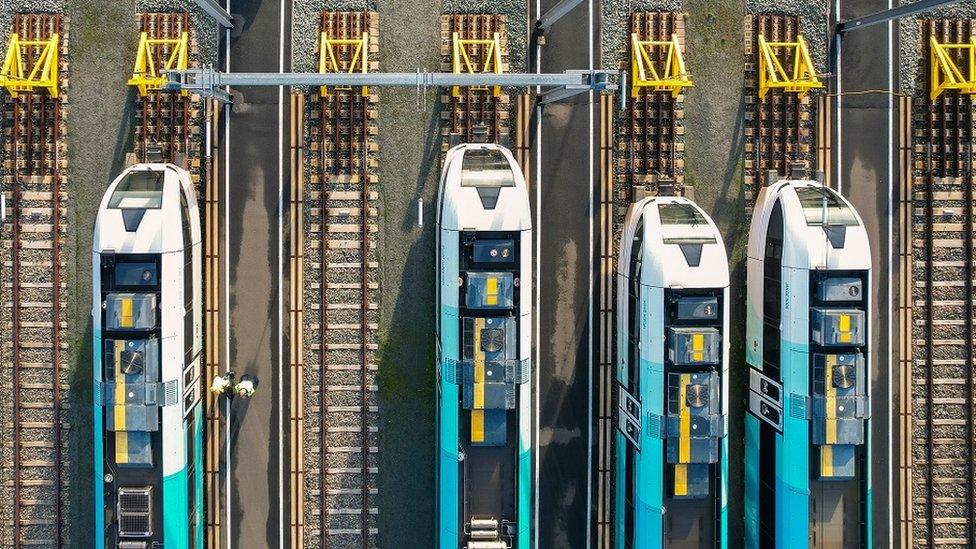
The golden age of Ireland's railways has well and truly ended, with far fewer stations and lines in use than in decades long since passed.
While the trains once seemed to run through virtually every village on the island, the rise of the car meant that more public money was soon put into roads instead of rail.
And although a revolutionary railway revival is highly unlikely, there was some hope of improvement when a cross-Irish border review was announced in April 2021.
Nichola Mallon, then the minister responsible for transport in Northern Ireland, and Eamon Ryan, her counterpart in the Republic of Ireland, promised an "ambitious piece of work" that would help inform decision-making and investment for years to come.
High-speed rail improvements between Cork, Dublin, Belfast and the north-west of the island have been considered as part of that work.
Possible rail extensions across both jurisdictions, including a previously-explored link between counties Donegal and Londonderry, have also been examined.
The Enterprise express rail link between Belfast and Dublin celebrated its 75th anniversary last year
Mr Ryan has spoken of one "interesting prospect" in particular - a potential line that "might spur from Portadown to Dungannon, Omagh, Strabane, then Derry with a connection to Letterkenny".
But after two years, the review has yet to be published and now campaigners want to see light at the end of that tunnel.
Officials from Stormont and Dublin told BBC News NI that a final draft has been filed and agreed but it still has to go through more checks on both sides of the border.
One of those checks is screening for Strategic Environmental Assessment (SEA) which is currently under way.
Spokespeople for both the Department for Infrastructure and the Department of Transport said if one is required it is "anticipated this will be subject to consultation around the middle of the year and the draft review will be published for the purposes of the consultation".
"The review will be finalised as soon as possible thereafter, with recommendations from the SEA process (if required) appropriately incorporated," they added.
Rail or road for financial priority?
So what can be done now that the all-island review seems to have taken a bit of a diversion?
Mark Gleeson from the group, Rail Users Ireland, says the review's prompt release is essential for the development of the railways.
"There are multiple rail projects in Ireland going to public hearing for planning approval currently," he says.
"The lack of availability of the review as an input into the process is a concern."
He also questions whether the lack of a functioning government at Stormont means there was no-one to sign the review off.
The Department for Infrastructure said that once the report is finalised, if there is no minister "approval will be considered taking into account the decision-making framework set out in the Northern Ireland (Executive Formation etc.) Act 2022 or relevant legislation in place at the time".
"It is expected that the final review will be published in the second half of 2023," the spokesperson added.
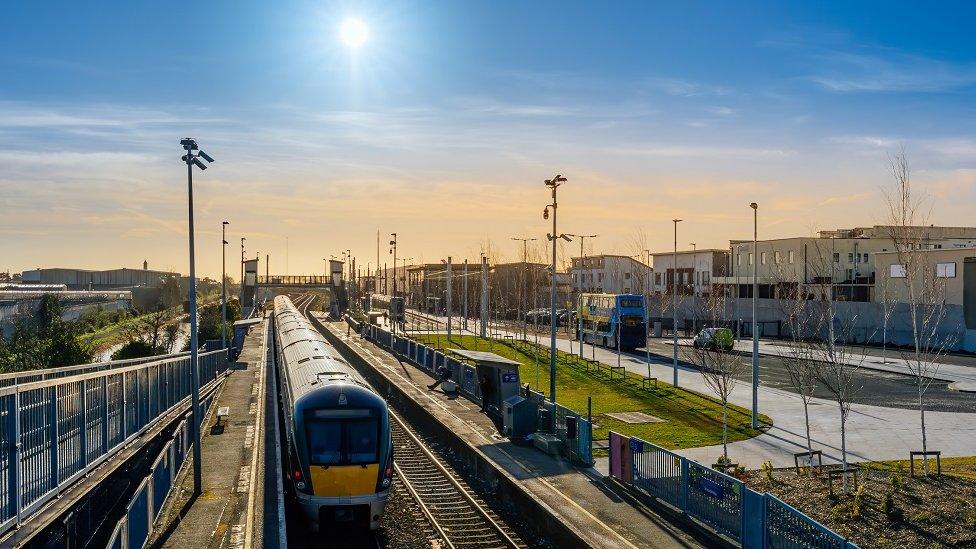
Major improvements to cross-border rail as well as suggestions for new links are anticipated to form part of the final report
Another campaigner, Aaron Vennard, who wants a circular rail route to connect Belfast with more surrounding towns, says the UK government has to "take a role in relieving the blockage".
The government commissioned a separate report - the Union Connectivity Review, external - in 2021, which recommended that Westminster should "provide funding and major project expertise" to support the all-Ireland review and its implementation.
"It would seem counterproductive [for the UK government] to allow their own recommendations to lie dormant," says Mr Vennard.
But he is unconvinced that rail infrastructure will be given financial priority in Northern Ireland.
"My fear would be that the A5 [road improvement scheme] would take priority and if that is the case any capital funding [from Stormont] would be unavailable for anything else for 10 years thereafter," he says.
"I think politicians have been unable to make the connection between improved rail in the region and traffic reduction on the A5, which would go some way to reducing accidents."
The 'knittedness' of the north-west
While some campaigners have their own ambitious thoughts for railway development, even those ideas would be a far cry from the level of connectivity the island once had.
Take County Donegal for example - it boasted one of Europe's largest narrow-gauge networks at 225-miles (362km) long but by 1960 all travel on it had ceased.
Likewise, there was a time when almost everyone in Northern Ireland lived within five miles of a railway station but the demand for trains decreased after the creation of the land border in the 1920s and increased competition from road vehicles for both travel and freight after World War One.
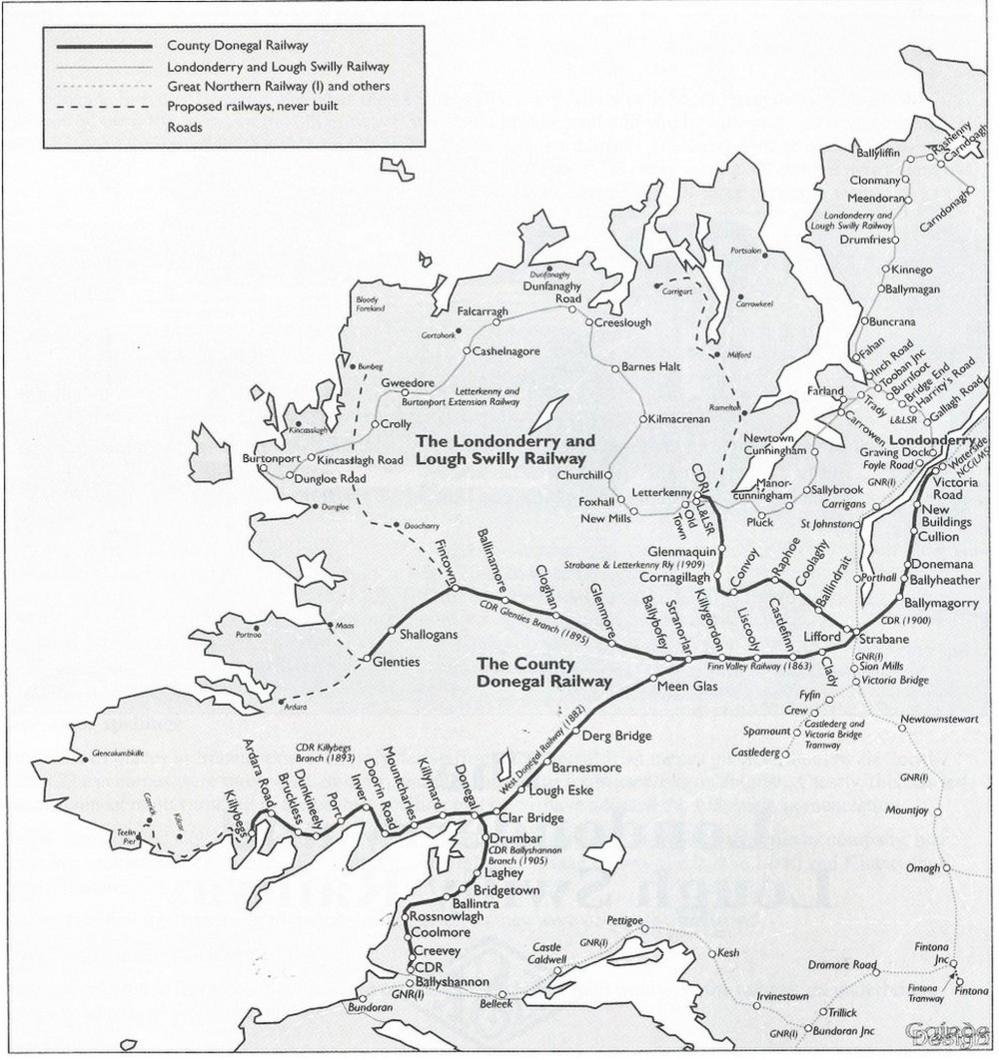
The County Donegal Railway and the Londonderry and Lough Swilly Railway formed the biggest narrow gauge system in north-west Europe
Despite being out of service for many decades, some of that infrastructure is still intact.
The Knockmore line from Lisburn to Antrim via Belfast International Airport is a notable example of track that could soon be revitalised.
The link between Portadown and Armagh city is another link that was recently the subject of a £60,000 feasibility study, the findings of which remain unreleased.
Steve Bradley from the Into The West lobby group has spent nearly 20 years campaigning for rail connectivity in counties Fermanagh, Londonderry, Tyrone and Donegal.
He says people outside of the north-west of the island "tend to not understand the degree of knittedness there is across the border between Derry and Donegal".
"For example 46% of all cross-border journeys for work or study are in the north-west corner - from Inishowen and north-east Donegal into Derry city," he explains.
Therefore the review's delay has "real-world consequences" on the ability of the public and private sectors to plan accordingly.

Into The West has proposed revitalising the "north corridor" with new and existing railway lines
"They need to start planning housing and services in relation to where rail would return to those areas," says Mr Bradley.
"They need to ensure they do not make planning decisions which could block the future return of rail or make it more difficult or costly.
"Are there investment decisions being taken today which might look different if Derry and Donegal had better rail provision for staff, customers and goods?
"Whether or not these things get built is of course a very different question.
"I would expect Derry to Letterkenny to happen as the Republic is swimming in money at the moment.
"It's a relatively inexpensive piece of work and along with the A5 it's an obvious way to improve connectivity to Donegal.
"I'm more concerned about whether Stormont will identify and secure the funding for Derry to Portadown."
- Published3 June 2023

- Published3 March 2023
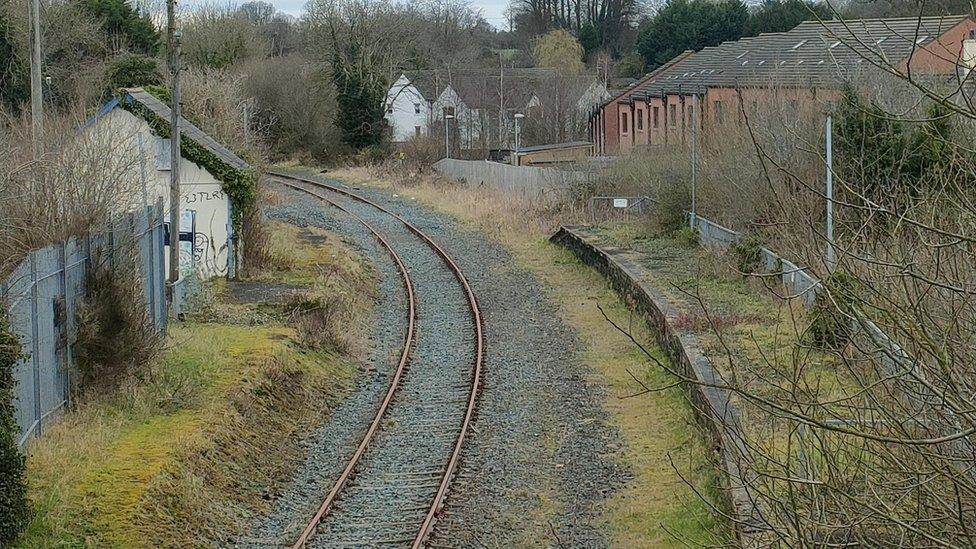
- Published19 September 2021
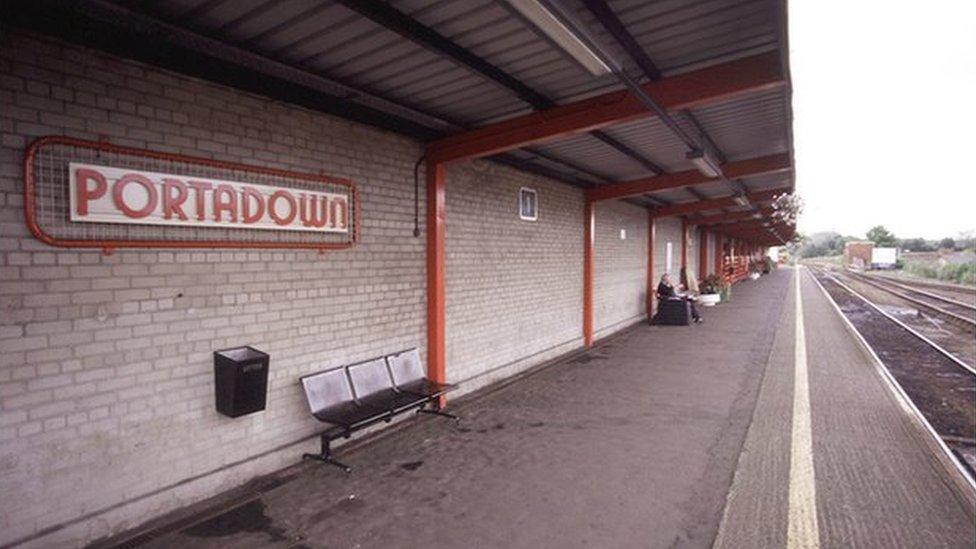
- Published16 May 2021
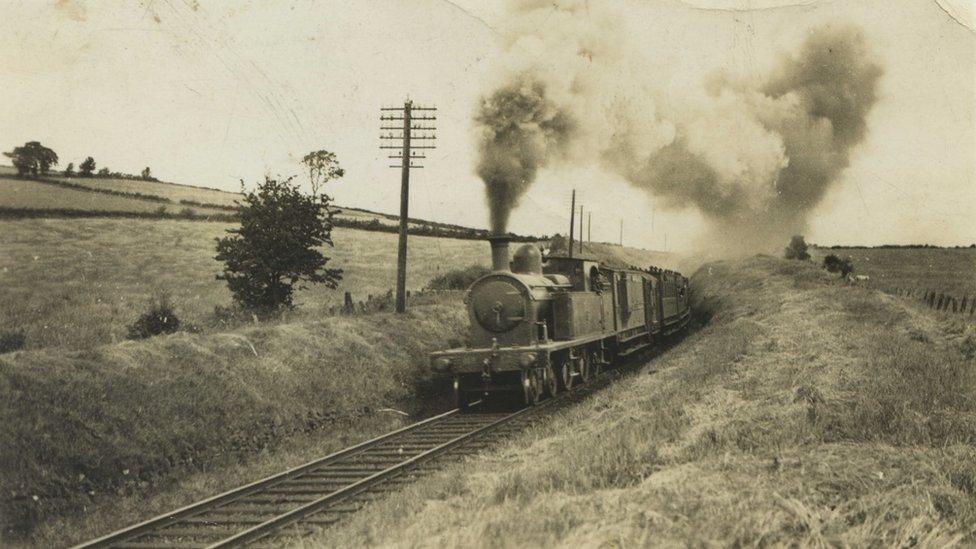
- Published7 April 2021
